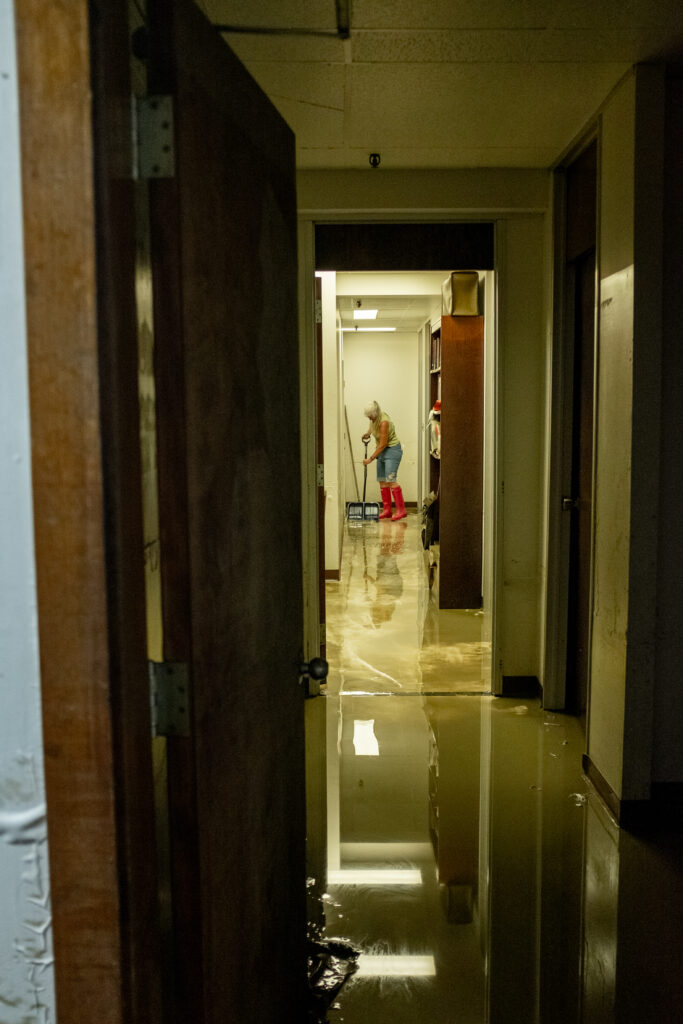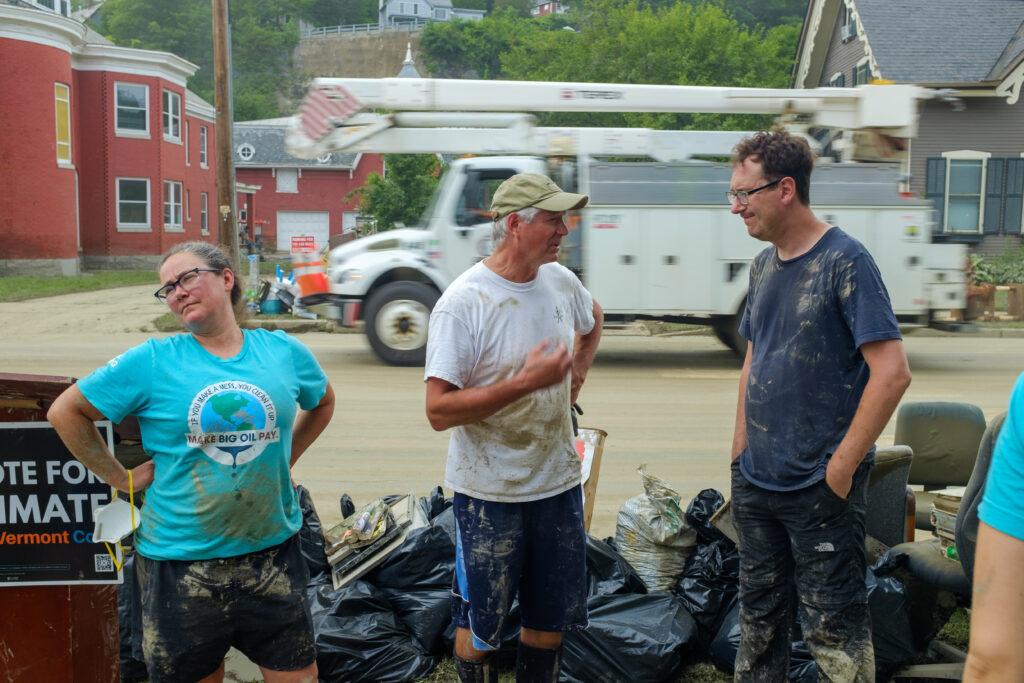As flood waters recede and Vermonters begin to rebuild, two things are becoming clear.
Disasters like these are extraordinarily expensive. The costs to repair damage to homes and infrastructure will be astronomical, not to mention the destruction of priceless memories, heirlooms, and lives.
And second, this was not a fluke. Not too long ago, storms like this and Tropical Storm Irene would have been described as once-in-a-hundred-year events, freak occurrences that were anomalies rather than the norm. Now, an unnamed storm has caused damage on par with and in some places exceeding what we experienced just a decade ago. And it is only going to get worse.
Our office in Montpelier saw flooding to the ceiling of our basement unit, wiping out paper records spanning the 50-year history of our organization, environmental reports, electronics, organizing tools, and thousands of dollars in merchandise. It has taken us many days of sweat, tears, and the help of generous volunteers to dispose of years of waterlogged VPIRG history, now destined for the landfill. Work to clear out the toxic sludge deposited by floodwaters continues.
Yet we were the lucky ones – in Montpelier, many residents and businesses suffered far worse, and in other parts of the state many lost everything.
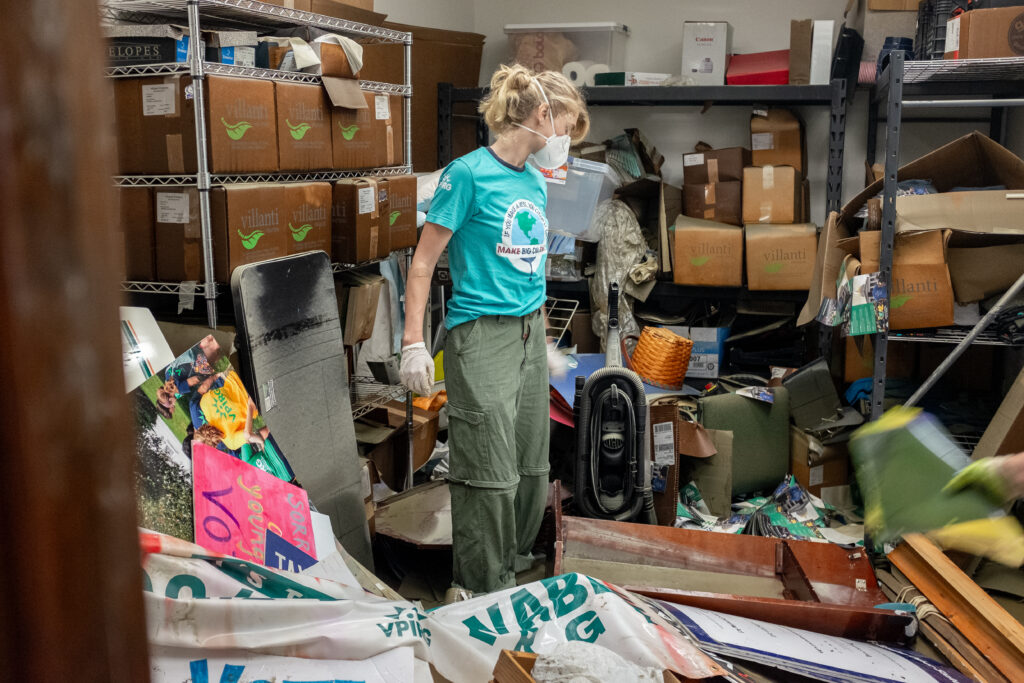
Roads, bridges, and other infrastructure across the state will need repairs and replacements. Entire homes have been washed away. Our dams barely held. Irene cost over $800 million, and we likely won’t know the full cost of recovery from this recent storm for years.
One of the first images we saw when surveying the damage was our climate action campaign materials, waterlogged and floating in sewage, and a poster with a photo showing the high-water mark after Irene. It was a little too on the nose.
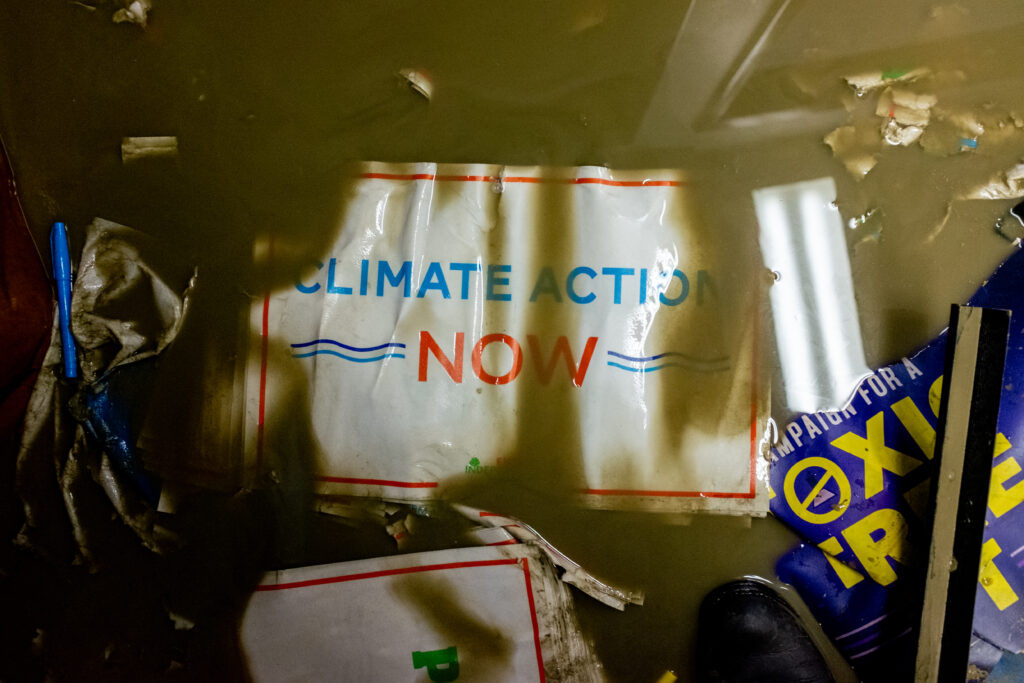
It is unfathomable to think that we may need to do this again in our lifetimes. But with the pace of the climate crisis quickening, it is probable that extreme weather will strike again, and again.
Since 2000, Vermont has seen at least one federally declared natural disaster per year, and our small state is simply not equipped to deal with repeated catastrophes of this magnitude. Just this summer we’ve seen choking air pollution from wildfires driving up healthcare costs, and the hottest global temperatures in recorded history. Climate change is not going away, and the most infuriating part is that this was entirely preventable.
We can say with certainty that responsibility for the climate crisis falls squarely in the lap of the oil and gas industry. Bombshell report after report has shown that industry executives knew about the dangers burning fossil fuels posed to the climate for the last 50 years, yet these findings were covered up in favor of a propaganda campaign designed to keep the public in the dark.
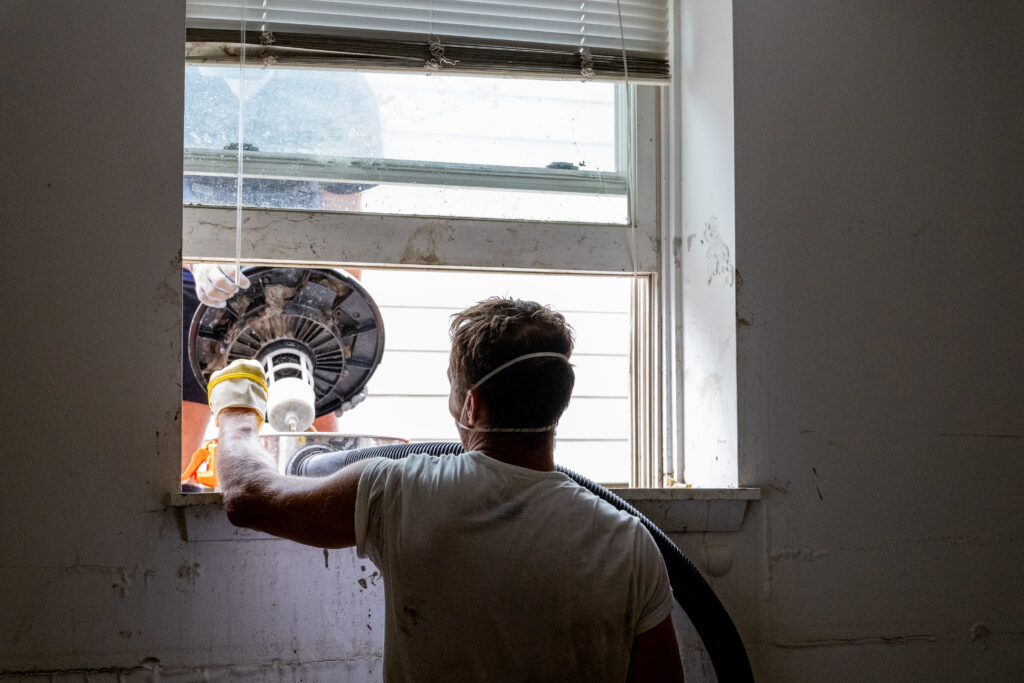
In the 1970s, ExxonMobil scientists made projections of climate change impacts that turned out to be quite accurate – better even than many government and academic researchers were able to forecast at the time.
Shell-funded researchers warned – in 1975 – that, “Energy from fossil fuel sources has a specific problem: the release of CO2 …. Increases in the CO2 content of the atmosphere could lead to the so-called greenhouse effect …. This has been estimated to be perhaps as high as 1⁰ to 2⁰C for a doubling of CO2 content in the atmosphere, which would be enough to induce major climatic changes.”
But instead of acting responsibly, big oil spent decades and millions of dollars on an effort to deceive the public.
As CNN reported in December, the U.S. House Committee on Oversight and Reform found that “Big Oil companies have engaged in a ‘long-running greenwashing campaign’ while raking in ‘record profits at the expense of American consumers.’”
Those profits in 2022 alone were more than $200 billion, and they made those outrageous profits by charging consumers some of the highest prices in history. If the events of the last few weeks have shown us anything, it’s that Big Oil should be paying some of those profits to clean up their mess.
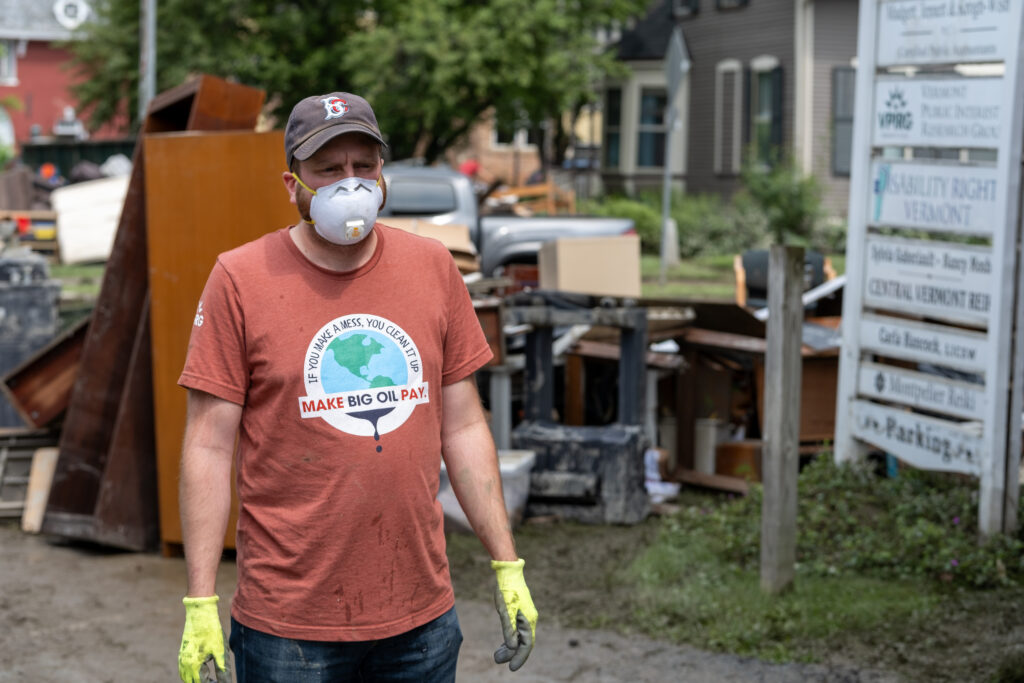
In June we launched a campaign to hold Big Oil accountable for the damage they have caused, calling for the biggest oil and gas companies to pay into a “Climate Superfund” that would help modernize Vermont’s infrastructure, weatherproof our schools and public buildings, address some of the public health costs of climate change, clean up after storms like this one and more. Our tagline for the campaign is “If You Make A Mess, Clean It Up,” and as the state spends the coming weeks literally cleaning up Big Oil’s mess, that line could not ring truer.
This isn’t a new concept – the EPA Superfund was established in 1980 to do the exact same thing with companies responsible for toxic waste sites – hold them accountable for the cleanup. And we’re not alone, either – a bill to charge the biggest climate polluters for a share of the cleanup costs has passed the New York state senate. Similar legislation has been introduced in Massachusetts and Maryland. It’s time to bring those efforts to the Green Mountain State.
Vermonters look out for each other, and as we pick up the pieces and begin to rebuild, it’s clear that our Vermont community is stronger and more resilient than ever. But community alone won’t protect us from the next storm or the climate crisis. We need to be prepared, and part of that means having the state resources on hand to build resilience and bounce back quickly after extreme weather events. Vermonters should not be left holding the bill when Big Oil has spent the last half-century causing the problem, covering it up, and raking in cash. Learn more, and take action at MakeBigOilPay.org
